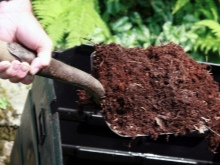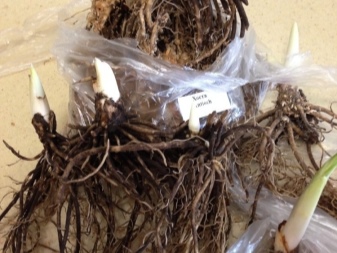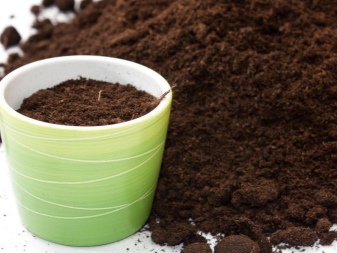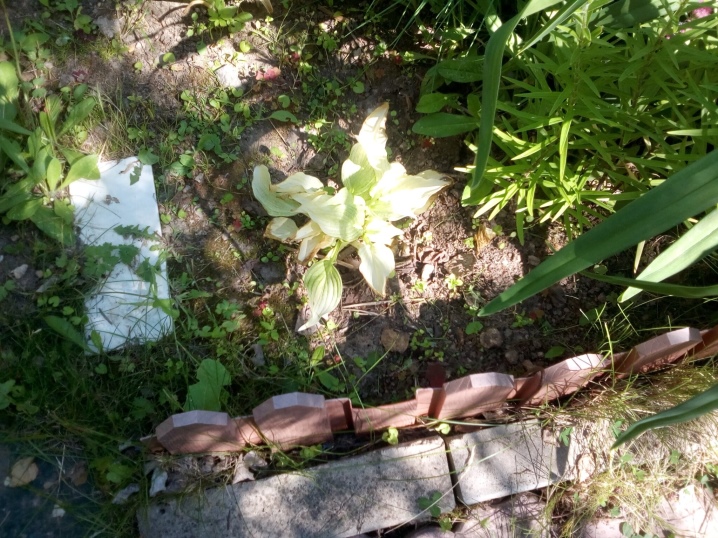Hosta "White feather": description, recommendations for cultivation and reproduction

Hosta or funkiya is a herbaceous perennial from the asparagus family, previously referred to as daylily. The flowers of the hosts are inconspicuous, but the colorful leaves are very beautiful.
To date, breeders have developed many varieties of this magnificent herbaceous plant. The most popular among florists is a hybrid white host called "White Feather".


Description
Khosta "White feather" is a large, fast-growing crop with dense roots and no stem.
It is prized not for its flowers, but for the beautiful wavy leaves of a creamy white color.
The leaf plates, white in early summer, are gradually filled with green veins, which become more and more as the plant grows. The flowers are light lavender. The bush is half a meter high and wide. The flowering season is from July to August. The hosta reaches its fullness of decorativeness after 5 years of growth.


Landing
The successful development of the function depends on a well-chosen landing site. It is one of the longest-lived perennials and has been growing for over 20 years, becoming only brighter and more expressive. For her shade tolerance, she was called the "queen of the shadow." The culture is most decorative in slightly shaded areas, where it is reliably hidden from the negative influence of scorching sunlight. However, in a very dark place, the bush will grow more slowly. Growing in a windless, draft-free place, the hosta will show the maximum effect of the color and pattern of the leaves.


The soil for planting this herb should be well dug up and fertilized with humus in the fall.
Hosts are planted in spring in deep holes at a distance of about 50 cm, covered with leafy soil and abundantly moistened. The soil between the bushes is mulched.
Funkias are quite hardy and winter-hardy, so they do not need shelter for the winter, the culture tolerates frosts down to minus 40 ° C. Preparation for winter consists in removing all the peduncles preserved by the perennial and mulching the place with garden soil.
Under the temperature regime of our regions, perennials fall under return spring frosts. But already by the warmth, the decorativeness of the plants is successfully restored and the affected leaves grow back.



Care
An unpretentious host needs to water on time, destroy weeds and apply humus in a timely manner. And also to loosen the area for good air exchange in the ground.
Plants need rare but abundant watering in the morning.
It is advisable to wet the entire soil layer to the roots. When the plants are already mature, their perennial root system can remain without watering for many days, even during dry periods.

It is not necessary to fertilize the perennial for the first 4 years of development. In the future, professional flower growers recommend feeding after watering. It is especially important in late spring and in the first half of summer to fertilize poor soils with liquid complex mineral fertilizers for ornamental shrubs, which will help the development and improve the appearance of plants. Organics scattered around the hosta in the fall will help the plant grow faster with larger leaves. For better root nutrition, the soil is mulched with humus, compost.
With this care, the perennial will gain sufficient mass to be ready for division in 5 years.


Reproduction
The host is propagated by dividing the bush, cutting and sowing seeds. Dividing a bush is the most common method for an adult, four-year-old bush. Young bushes do not divide, they will lag behind in development. In the spring or at the end of summer, several divisions with two rosettes of leaves are disconnected from the dug out bush and transplanted into rhizome-sized holes at a distance of about 30 cm.A small amount of wood ash is added to the bottom of each watered hole.



Cutting is a less popular method. It can be carried out from late spring to mid-summer. Shoots are cut with a part of the rhizome - a heel on short stalks with small leaves, which are cut by a third. This will reduce moisture evaporation. Shoots planted in a darkened place and covered with a film will take root after two days, but will slightly tuck and lie on the ground. During this time, they need to be watered regularly. And the film will hide from the sun. After 3 days, they will rise and recover.
You need to plant a perennial before mid-September, so that the seedlings have time to take root before the onset of autumn frosts.




Seed propagation is a rarer method because young plants often do not repeat parental traits when sown. The process is carried out in the spring from late February to early March.
Seedlings develop slowly and achieve a decorative effect only in the fifth year of life. Hosta seeds have reduced germination, so they are pre-soaked in growth stimulants. You can use aloe juice, "Kornevin", "Epin" or other drugs. With their help, the germination rate will exceed 75%. Cooling seeds in the refrigerator for several weeks will also increase germination.



The best soil is a ready-made commercial mixture. Drainage is laid at the bottom of the container, a soil mixture of peat, perlite and vermiculite is poured and moistened. The seeds are scattered over the top of the potting mix and lightly sprinkled with soil. Further, the container is covered with foil and stored at a temperature of + 20 ° C.
When the first shoots appear after sowing, they must be protected from direct sunlight and periodically moistened.




As soon as the second leaf grows on the shoot, each seedling is transplanted into a separate container with soil mixed with sand.
To moisten the soil in the container, it is placed in a deep pan with water. During this period, it is necessary to gradually harden the plants, briefly removing the film from them. After about a week, the film is completely removed and the seedlings are hardened for several weeks in the open air. Seed-propagated hosts develop very slowly and need careful care.

Diseases and pests
Slow or poor development is the first sign of improper or irregular care. Only constantly inspecting the plants, you can repair the damage in time.
The most common diseases are fungal that easily migrate to neighboring plants, for example, phyllostictosis, gray and stem rot, sclerotinia.
They are disposed of by spraying with fungicides.
Another problem is viral infections, which are transmitted not only through pests, pollen, but also through the tools that growers use, for example, secateurs. Affected plants cannot be treated, so they are dug up and burned.

The main plant pests are slugs, stem and leaf nematodes that eat up the growth. They fight slugs by cultivating the land with Ferramol. This effective slug and snail control agent, when released into the soil, becomes a plant nutrient. Nematodes die from "Nematofagin" - an environmentally friendly, natural, biological agent.
"Karbofos" and insecticides will help with caterpillars and beetles.
Rodent control involves setting traps, traps and poisonous baits, or landing hosts in special mesh containers to prevent damage.


Why does it grow poorly
These fast growing plants are able to quickly recover from any negative influence. However, it happens that some specimens grow poorly.
The main reasons for the poor growth of the bush:
- acclimatization, insufficient feeding or unsatisfactory watering;
- root build-up due to late germination, if the bush is grown from seeds;
- the function is located in a too dark place, which is why the leaves have little chlorophyll;
- close proximity to competing plants, a tree, shrub, or strong vegetation, causing the plant to lack nutrients and moisture.

Recommendations
Help grow healthy specimens professional advice.
- If the edges of the leaves are darkened, you need to increase the watering.
- Dying leaves must be removed before winter, otherwise they will become a sticky film by spring.
- In spring, hosta sprouts emerge from the soil rather late, so it is important not to damage the plants when digging.
- After flowering, the bush loses its shape, therefore, for greater decorativeness of the leaves, it is necessary to cut off the peduncles at the stage of their formation, and also cut off the flower arrows that appear in July. This will help keep the bush compact.
- In the absence of flowering, if it is not a late variety, the bush needs thinning.


Use in landscape design
Due to its shade tolerance, the White Feather host is ideal for places where most ornamental plants will feel uncomfortable. It is impossible to imagine a composition in which their beautiful leaves would be out of place.
Hosta is able to show her best qualities in any corner of the garden, decorate borders and ridges, mixborders, plantings along the paths with beautiful wide leaves. Perfect for planting along the shore of a reservoir and for rocky gardens.


As an element of decor, the White Feather variety is especially popular with gardeners and landscape designers. The self-sufficiency of the White Feather hosts determines its use in solitary plantings. Also, the function will perfectly fit into the color palette of any other plants. An excellent option would be to combine it with flowering garden crops. For example, contrasting compositions of hosta leaves with blooming peonies, heucheras, lungwort and gladioli. Its tandem with coniferous perennials is beautiful.


For a quick overview of the hosts of the hybrid White Feather, see the video below.







































































































The comment was sent successfully.